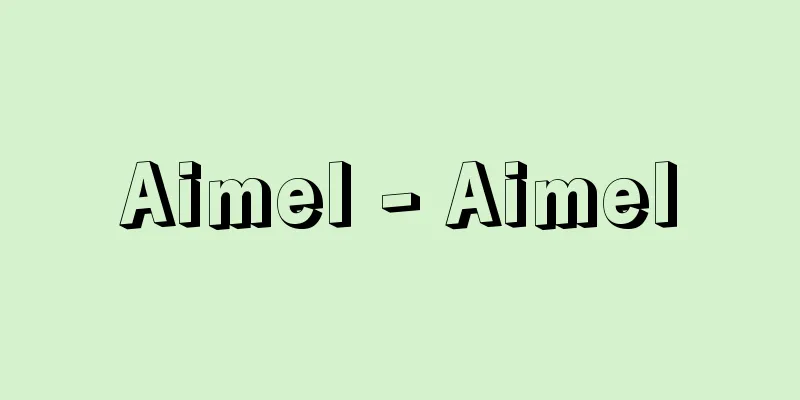Authentic

|
A general term for a group of stories in Otogi-zoshi that tell the origins of the gods and Buddhas of shrines and temples as human stories. The format is similar to the Honshotan and Jataka tales found in Buddhist scriptures. It is supported by the religious ideas of the theory of honji suijaku and Wako dojin, and has a narrative structure that is often seen in Setsukyōbushi (Setsukyō jōruri) and old jōruri. Its predecessors can be seen in the origin stories collected in the Shintoshu (Shinto collection) during the Nanboku-chō period, and many works were created during the Muromachi period. It is a form that did not exist in stories of the previous era, and can be said to be a representative world of Otogi-zoshi. In the sense that it tells the origins of gods and Buddhas in a religious and faith-based way, it can also be considered a medieval revival of the form of ancient mythology. Usually, the word "honji" is added to the title of the work, but some do not follow this rule. Many of them are full of romance, skillfully combining motifs from local tales and folklore. Works include "Kumano no honji," "Itsukushima no honji," "Amida no honji," "Tsukibi no honji," "Tanabata no honji," "Chikubujima no honji," "Tenjin no honji," "Izu-Hakone no honji," "Bishamon no honji," "Bontenkoku," "Kibune no honji," and "Suwa no honji." "Urashima Taro" and "Monokusa Taro" also end with "honjimono." [Tokuda Kazuo] "Study of Tales from the Kamakura Period" by Ogi Takashi (1961, Toho Shobo)" ▽ "Study of Religious Arts and Literature in the Middle Ages" (Chikudo Reikan Collected Works 3, 1976, Serika Shobo) ▽ "Study of Honjimono in the Middle Ages 1-4 by Matsumoto Takanobu" (Collected in The Collection of Shido Bunko Essays 9-14, 1971-1977, Keio University)" ▽ "On Honjimono in Otogi Zoushi" by Tokuda Kazuo (Collected in Appreciation of Classical Japanese Literature 26, Otogi Zoushi and Kana Zoushi, 1976, Kadokawa Shoten)" [References] | | | | |The story of the origin of Kumano Sansho Gongen. It had a great influence on the propagation of Kumano faith. Tanryokuhon "Kumano Honchi" Published in the first half of the 17th century (late Kan'ei to around Shoho) Owned by the National Diet Library "The Home of Kumano" Source: Shogakukan Encyclopedia Nipponica About Encyclopedia Nipponica Information | Legend |
|
御伽草子(おとぎぞうし)における、社寺の神仏の由来縁起を人間の物語として語る作品群の総称。その形式は経典類に載る本生譚(ほんしょうたん)・前生譚(ジャータカ)に似ている。本地垂迹(すいじゃく)説や和光同塵(どうじん)の宗教理念に支えられたもので、説経節(説経浄瑠璃(じょうるり))や古浄瑠璃にもよくみられる物語構造である。その先蹤(せんしょう)的なものは南北朝期の『神道集(しんとうしゅう)』所収の縁起物語にみられ、室町時代には多数の作品が生まれた。前代までの物語にはなかった形式のもので、御伽草子の代表的世界といってよく、また神仏の始源を宗教的、信仰的に物語るという意味で、古代神話の形態の中世的復活ともみなしうる物語類である。通常はその作品名に「本地」の語を付しているが、これに従わぬものもある。在地的な説話や民間伝承の諸モチーフを巧みに結合させたロマンあふれるものが多い。作品には『熊野の本地』『厳島(いつくしま)の本地』『阿弥陀(あみだ)の本地』『月日の本地』『七夕(たなばた)の本地』『竹生島(ちくぶじま)の本地』『天神の本地』『伊豆箱根の本地』『毘沙門(びしゃもん)の本地』『梵天国(ぼんてんごく)』『貴船(きぶね)の本地』『諏訪(すわ)の本地』などがあり、『浦島太郎』『物くさ太郎』なども末尾は本地物の形になっている。 [徳田和夫] 『小木喬著『鎌倉時代物語の研究』(1961・東宝書房)』▽『『中世・宗教芸文の研究』(『筑土鈴寛著作集3』1976・せりか書房)』▽『松本隆信「中世における本地物の研究 1~4」(『斯道文庫論集』9~14所収・1971~1977・慶応義塾大学)』▽『徳田和夫著『お伽草子の本地物について』(『鑑賞日本古典文学26 御伽草子・仮名草子』所収・1976・角川書店)』 [参照項目] | | | | |熊野三所権現の由来物語。熊野信仰の教宣に大きな影響を与えた。丹緑本『くまのゝほんち』 17世紀前半(寛永末~正保ごろ)刊国立国会図書館所蔵"> 『熊野の本地』 出典 小学館 日本大百科全書(ニッポニカ)日本大百科全書(ニッポニカ)について 情報 | 凡例 |
Recommend
Augustus [II] - Augustus
King of Poland (reigned 1697-1733). Known as the S...
shemoneh-esreh (English spelling) shemonehesreh
…Three times a day, morning, noon, and evening, t...
Verrocchio - Andrea del Verrocchio
Italian metalworker, sculptor, and painter. His f...
Omega Centauri star cluster - Omega Centauri star cluster
NGC5139 is a globular cluster in the southern cons...
Koshu Hotto no Shidai
The provincial law of the Sengoku daimyo Takeda cl...
Chief Administrator
〘Noun〙① In China, a lower-ranking official with a ...
Ezomikasaryu fossil - Ezomikasaryu fossil
...Onion and melon cultivation is popular in the ...
Wolaterae - Wolaterae
…an ancient city of Etruscan origin in Tuscany, c...
Tan'an Chiden
Year of birth: Year of birth and death unknown. A ...
Cordyceps militaris (English spelling)
…[Tsubaki Keisuke]. . . *Some of the terminology ...
Armagne - Armagne
…A region located almost in the center of Europe....
Iris xiphioides (English spelling) Irisxiphioides
…[Hiroshi Aramata]. … *Some of the terminology th...
Liquid Helium II - Equilibrium Helium
… Liquid 4He , or liquid helium-4, transitions to...
"Briefe, the newest literatur is used" (English: Brief, the newest literatur is used)
...In France, P. Maribault's Spectateur Franç...
Jean François de Galaup, Comte de La Pérouse
1741‐88 French Pacific explorer. Joined the navy i...









